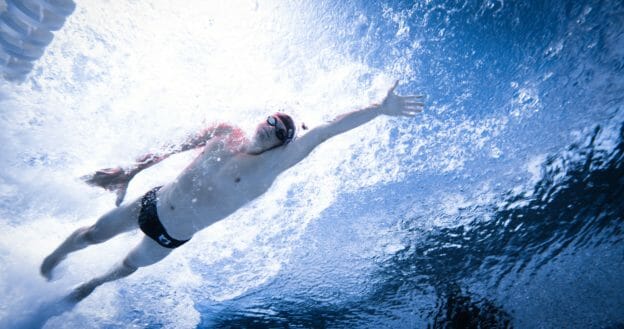Why I like Drills
Some coaches think that drills are a waste of time, but I am not one of them. I would go so far as to say that swimming drills are the most effective way of teaching new or different swimming techniques. A swimmer cannot do drills alone, however. Drills may help swimmers to understand the correct motions or feeling for the technique, but they must be put into practice right away.
At The Race Club, we never do drills alone for the sake of doing drills, without following the drill with a swim. In general, we design our drills to teach the swimmer one fundamental technique. The human brain is incapable of thinking two thoughts at a single time. If you try to teach two techniques at once with one single drill, the swimmer will probably get them both wrong. It is always better to concentrate on correcting one technique at a time.
Every swimmer’s rate of learning or kinesthetic sense for motor development is different. Some swimmers learn on the first try. Others require 10 or 20 or 30 repetitions before they finally get it. We also find that some drills work better for some swimmers than others. That is why we use many different drills to teach more effectively. However long it takes to get the drill right, the swimmer should then immediately put the technique into practice with a swim. It doesn’t matter if the swimmer does the drill correctly or not if they go back to making the same mistake during the swim.
For example, if a swimmer has an in-sweep or an out-sweep problem in freestyle with one pulling arm only, we might do a 50 one arm drill, using only the arm with the problem technique (other hand at the swimmer’s side), followed by a 50 swim. We might need to use some special equipment or tools to help the swimmer get it right. We won’t stop until the swimmer can do the pulling motion correctly during the drill and the swim, no matter how long it takes.
Once we establish that a swimmer can do the technique correctly while swimming slowly, we then turn up the volume on speed and see if they can retain the same good technique while swimming faster. Often, in trying to go fast, the swimmer will lose everything they just learned. In the heat of battle, good technique often goes right out the window.
Swimming fast with good technique is the ultimate goal. That enables swimmers to swim even faster. This week in our newly-released video, we put Masters swimmer Marc Clayton to the race test. We spent two days correcting his bad out sweep, his poor kicking technique, and his meager body rotation. The question is, can he correct all of those technique problems while swimming fast?
Check out the video to find out!
I hope you enjoyed this article on Why I like Drills!
Yours in Swimming,
Gary Sr.

